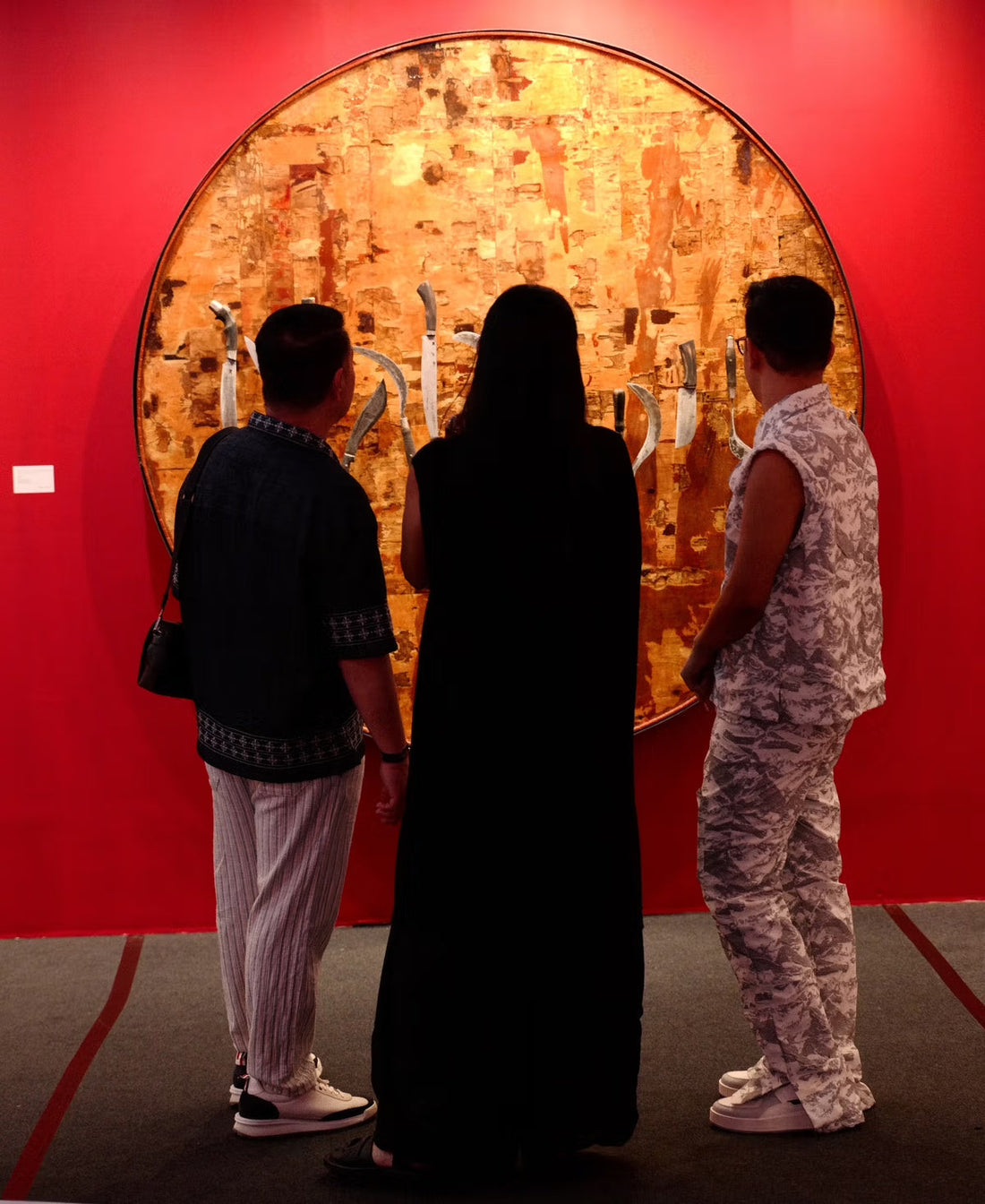This year 48 galleries take part in Manila's premier art fair

Visitors to Art Fair Philippines 2025
Manila’s art market remains “proudly local” says Trickie Colayco-Lopa, who cofounded Art Fair Philippines (AFP) in 2013. This year the fair moves from its original location in a carpark in Makati City’s Link to tents in the nearby Ayala Triangle park, plus some spaces in the adjacent Mandarin Oriental hotel. Featuring 48 galleries, the fair is looking to bolster its position within the Philippines art word rather than appeal internationally, and Colayco-Lopa says the fair is not trying to appeal to Western blue chip galleries.
“Collectors here are more comfortable within a certain price range,” of $10,000 to $20,000. “International galleries have their price points.” The fair, she says, has a “core group” of participants that has held consistent over the years. Newcomers are largely invited by the regulars, which are 80% from the Philippines—and apart from two from Manila. She estimates the market to be 75%-85% paintings.
While Philippines and diaspora artists enjoy growing visibility in contemporary art globally, the local market remains quite traditional, with classical and modern Philippines art predominant. “In terms of value, masters and Modern are 80% of the market. But contemporary art has more sales volume,” observes the dealer Jaime Ponce de Léon. The Philippines Modernism-focused Saturday auction of his León Gallery is, along with AFP, one of the pillars of the informal but lively Manila art season. “Contemporary here can be fad-driven, focused on the trendy and often buyers just copy each other,” he says.
The Philippines economy has kicked in to gear, with 6.1% to 6.5% GDP growth, Asia’s second highest after Vietnam. Colayco-Lopa expresses uncertainty about how much that has spilled into the art market, “but we have seen some pleasant surprises with less known artists selling well.”
With a selling booth at AFP ahead of the auction, Ponce de Léon says that on opening day he sold a Nena Saguil painting to the artist Yola Perez Johnson for $40,000. He reports active inquiries but no other confirmations. “With the high value secondary market art, we have to be patient.” Beyond economics, he observes, the local art market has gotten “more professionalised, standardised and transparent,” building more collector confidence.
This year’s Manila art week comes just ahead of a midterm senate election in May, and as vice president Sarah Duterte faces impeachment over corruption allegations. She is the daughter of recent strongman president Rodrigo Duterte; her backer turned rival president since 2022 and until 2028 Ferdinand “Bongbong” Marcos, Jr. is the son of the Philippines’ military dictator Ferdinand Marcos Sr.
So far Marcos Jr. has largely held off on the violence of his predecessor, who clothed an aggressive crackdown in the auspices of a drug war, and of his father, who ruled the country from 1965 to 1986, including a martial law period between 1972 to 1981. Apart from a backpedalled book ban early in his term, and some other efforts to soften historical memories of the dictatorship, Marcos Jr has seemed largely neutral or positive towards art and culture, with his wife Liza Araneto Marcos promoting heritage restoration and attending some art events, including León’s auction preview earlier in the week. “People are happy with the administration, there is a good mood” with the end of Duterte’s extrajudicial killings, says Ponce de Léon. Marcos Jr.’s approval rating, while down from about 80% early on, remains at a solid 48%. “We hope that extends to the art market. Stable is good, and inflation has stabilised too.”
Ponce de Léon did find a silver lining for the art market in the Duterte years: “With the previous administration, the president was from the South, and many people in high positions were not from Manila. That led to strong interest, because they were new to art, with empty houses to fill. With the new administration, everyone is from old Manila families, and that segment of society has less demand,” as they largely have existing collections.
The mood was optimistic at AFP’s opening last Thursday. Sales overall started slow, said several galleries, though a few more commercial dealers and crowd pleasing works did sell on opening day.
Unanimous support was expressed for the venue change. “We’re adjusting to the new venue, and like it so far—but let’s see. We are glad for the air conditioning, and it is less crowded,” says Mica Magsanoc, the head of publishing at the gallery and publisher Archivo 1984. The nearby gallery space is showing mid-1980s to early 1990s works by Philippines contemporary star Manuel Ocampo, who also has a large presentation in the Projects section. “He has a good market,” says Magsanoc. “So far there is a lot of interest, which we hope to translate to sales.”

